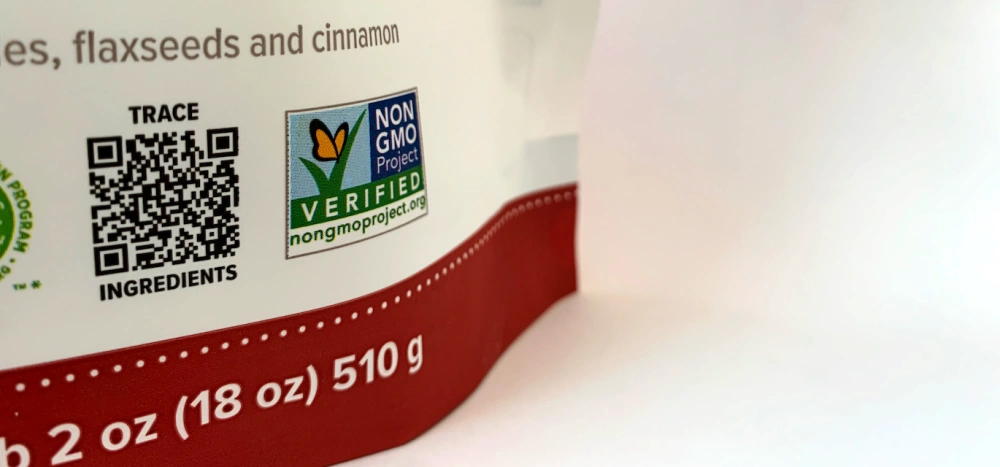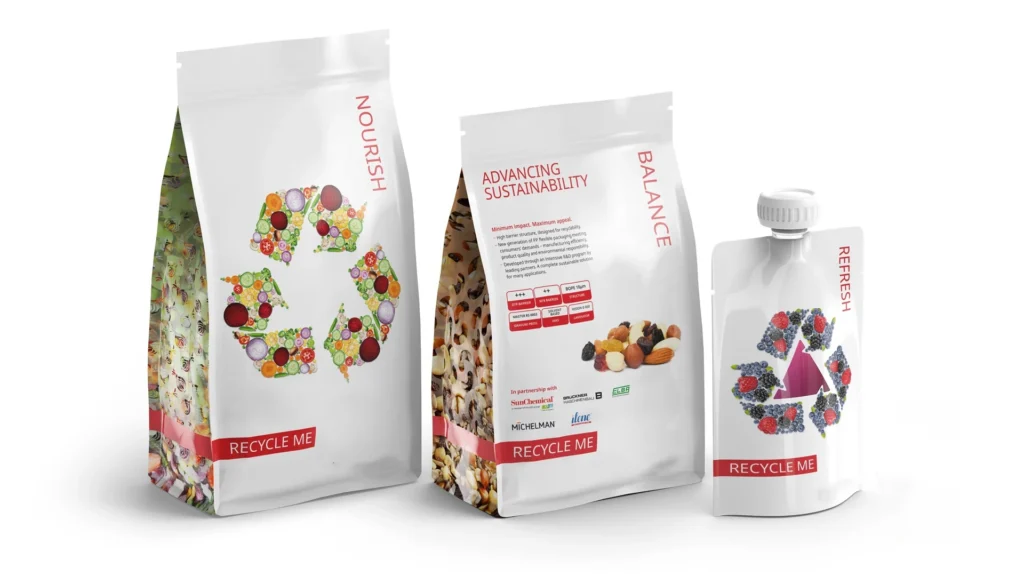As you look ahead to 2025, staying updated on the latest food and beverage packaging trends will help your brand stand out. Consumers demand more sustainable, efficient, and innovative packaging solutions. In this article, you’ll discover key trends shaping the industry, from eco-friendly materials to smart packaging.
To elevate your brand, get in touch with BN Pack for custom food and beverage packaging that meets your needs.
Why Are Food and Beverage Packaging Trends Important for Your Business?

Staying up to date with food and beverage packaging trends is essential for the success of your business. It helps you align with consumer expectations, stay competitive, improve cost efficiency, and enhance your brand’s appeal. Here’s why these trends matter:
Consumer Expectations:
Consumers demand sustainable and eco-friendly packaging. By staying updated on trends, you ensure your packaging meets these expectations, attracting environmentally conscious buyers and improving your brand’s reputation.
Competitive Advantage:
Implementing the latest packaging innovations gives your brand an edge in the market. Modern trends help set your product apart from competitors, enhancing your positioning and increasing your market share.
Cost Efficiency:
Trends in food and beverage packaging often emphasize reducing material waste and optimizing production. By adopting these trends, you lower your production costs, improve efficiency, and boost your profit margins.
Brand Appeal:
Packaging plays a crucial role in consumer purchasing decisions. By following the latest trends, you create visually appealing, functional packaging that aligns with your audience’s preferences and enhances your brand’s overall appeal.
Food and Beverage Packaging Trends in 2025
1. Food and Beverage Smart Packaging Trends

Food and Beverage Smart Packaging Trends are gaining momentum as the industry focuses on innovation and consumer engagement.
Smart and Active Food Packaging Sensors:
These sensors help monitor product freshness by detecting changes in temperature, humidity, or gases. You gain real-time data to optimize storage and delivery, ensuring products remain fresh and safe for consumers.
Engaging and Interactive Packaging Designs:
Interactive packaging provides an engaging experience for consumers through digital elements like augmented reality or NFC (Near Field Communication) features. These create a memorable connection and increase consumer engagement with your brand.
Eco-friendly Packaging Solutions with Advanced Features:
Sustainable packaging solutions now include smart features like biodegradable materials that also offer product protection and quality preservation. This trend appeals to environmentally conscious consumers and enhances your brand’s green image.
Integration of IoT Technology in Packaging:
The Internet of Things (IoT) integrates sensors and tracking systems into packaging, allowing you to track products in real time. This not only improves supply chain visibility but also provides valuable data on consumer behavior and product performance.
Intelligent Labels and QR Code Systems:
Smart labels with QR codes allow consumers to access detailed product information instantly. This technology enhances transparency, provides personalized marketing, and offers more convenience for consumers, leading to increased trust and loyalty to your brand.
2. Distinctive Stylistic Packaging Trends
Striking Fonts and Bold Typography
Eye-catching typography enhances brand recognition. Large, bold fonts create a strong visual impact, making packaging stand out on shelves. Custom lettering adds personality, reinforcing brand identity. Unique typography engages consumers, ensuring packaging is memorable and instantly recognizable.
Sleek and Simple Design
Minimalist packaging highlights product quality. Clean lines and uncluttered layouts create a modern, premium look. A well-balanced color palette enhances sophistication. Simplicity attracts consumers who appreciate elegance and functionality. Thoughtful material selection further enhances the brand’s refined aesthetic.
Unique Shapes and Bright Colors
Unconventional packaging shapes attract attention. Geometric or asymmetrical designs add visual intrigue, making products more desirable. Vibrant colors evoke emotions, strengthening brand perception. Strategic color contrasts increase shelf visibility, drawing consumers in. Distinctive forms ensure differentiation in competitive markets.
Handmade Appeal and Rustic Style
Natural textures and hand-drawn elements evoke authenticity. Kraft paper, raw finishes, and earthy tones enhance an artisanal feel. Subtle imperfections add charm, appealing to eco-conscious and handmade-loving consumers. Vintage-inspired seals and twine wrapping reinforce a handcrafted image, creating a strong emotional connection.
Artistic Illustrations
Hand-sketched or digitally crafted artwork adds storytelling elements. Detailed illustrations convey brand values and product uniqueness. Vibrant, intricate visuals encourage engagement, making packaging collectible. Illustration styles range from abstract to realistic, enhancing emotional appeal and creating a memorable customer experience.
Retro Design Influences
Nostalgic aesthetics resonate with consumers. Vintage-inspired fonts, muted color palettes, and classic branding elements create familiarity. Retro packaging builds trust by reminding consumers of timeless quality. Classic motifs and heritage-inspired graphics differentiate brands in a crowded marketplace, adding sentimental value.
Patterns and Decorative Motifs
Intricate patterns enhance visual appeal. Repeating geometric or organic motifs establish a signature style. Textured designs create a tactile experience, increasing consumer interaction. Unique patterns convey luxury, craftsmanship, and attention to detail. Distinctive motifs strengthen brand recognition, setting packaging apart from competitors.
3. Sustainability Food and Beverage Packaging Trends

Sustainability is now an ethical and commercial imperative in the realm of food packaging. Increasing consumer awareness is leading companies towards sustainable packaging solutions, crafted from recyclable, biodegradable, and environmentally friendly materials.
Choosing sustainable packaging is not only an ethical decision but also aligns with consumers adopting eco-friendly behaviors. From reusable pouches to biodegradable bags, the industry is exploring inventive approaches to minimize plastic usage and advocate for environmentally conscious practices.
Bn Pack Sustainable Packaging in Current Development:
Bioplastics and Cellulose: PLA and PHA are bioplastics derived from renewable resources. Cellulose, extracted from plants, creates various packaging materials that are water- and air-resistant, used for food, film, and netted bags.
Mushroom Mycelium and Sugarcane Bagasse: Mushroom mycelium mimics synthetic foam plastics with its lightweight, moldable, and biodegradable properties. Sugarcane bagasse produces pulp for foodservice packaging, offering a more energy-efficient and pollution-free alternative to traditional materials.
Seaweed and Coconut Husk: Seaweed-based packaging and coconut husk alternatives provide biodegradability and zero-waste benefits. Seaweed products like Ooho Water aim to replace conventional containers, promoting a plastic-free environment.
Shrimp Shells and Recycled Plastic: Chitin from shrimp shells, combined with natural materials, is being explored to create biodegradable plastics. Recycled PET and HDPE bottles support a closed-loop system, reinforcing the circular plastic economy.
4. Guaranteeing food safety, freshness, and quality
Food safety is a top priority for consumers, and packaging plays a crucial role in maintaining the protection and quality of food products. Packaging innovations, such as antimicrobial films and freshness sensors, extend shelf life and preserve freshness. Vacuum-sealed packaging and protective barriers ensure products arrive in perfect condition, maintaining taste and nutritional value.
How to Choose the Right Trends for Your Business?
When integrating new trends into your business, it’s essential to conduct a thorough analysis. Evaluating the operational feasibility, the suitability of packaging materials, and the type of products you’re handling is crucial. Also, understanding the complexities of transportation and distribution within your operations is key to ensuring the trend aligns with your business structure.
To ensure you’re choosing the right trends, follow these steps to make informed, strategic decisions:
1. Understand Your Target Audience:
Begin by analyzing your target audience. Delve into customer demographics, preferences, and evolving behaviors. The trends you choose must cater to these insights and address both current and emerging needs. Recognizing cultural nuances, spending habits, and environmental concerns will guide you in selecting packaging trends that resonate with your consumer base.
2. Assess Operational Feasibility:
Examine the practicalities of implementing a new trend. What resources, technology, and infrastructure will it require? It’s vital to ensure your business has the capacity to adopt and maintain the trend without disrupting operations. Consider the cost implications and how adopting this trend will affect your production timelines and resource allocation.
3. Consider Scalability and Longevity:
Assess the scalability of the trend—can it grow alongside your business? Evaluate the long-term relevance of the trend. Choose trends that have staying power and are adaptable to future growth. Avoid trends that are overly niche or could fade quickly, as they may not offer sustainable benefits for your business.
4. Ensure Legal and Regulatory Compliance:
Verify that any trend you implement adheres to legal and regulatory standards. From food safety regulations to labeling and environmental requirements, staying compliant ensures your business avoids costly fines and reputational damage. Research any relevant industry guidelines to ensure you meet all necessary standards.
5. Implement Monitoring and Evaluation Systems:
Once the trend is in place, set up systems to monitor its impact. Develop key performance indicators (KPIs) to assess the trend’s influence on sales, brand awareness, and customer satisfaction. Regularly evaluate the trend’s performance to ensure it aligns with your business goals and adjust strategies as necessary to maximize its potential.
By strategically aligning trends with your business goals, customer needs, and operational capabilities, you ensure that your decisions contribute to long-term growth. Choosing the right trends isn’t about following the latest buzz—it’s about making informed decisions that drive sustainable success.
Conclusion
Staying updated on Food and Beverage Packaging Trends will position your business for success in 2025. Embrace innovative solutions, sustainability, and smart technologies to meet consumer expectations and optimize your packaging strategy. As you adapt, consider quoting sustainable food packaging pouches and beverage pouch from BN Pack to enhance your product packaging.
Reach out to us today and elevate your packaging with high-quality, eco-friendly solutions.
